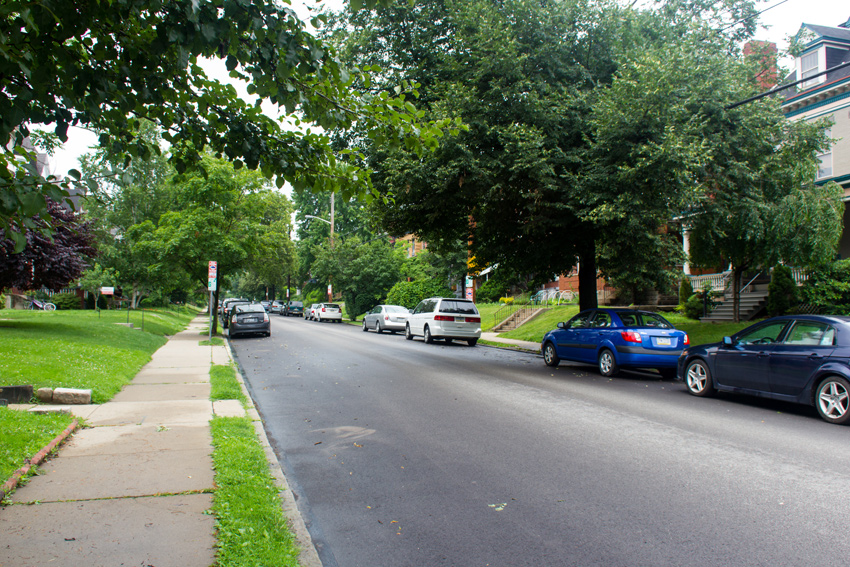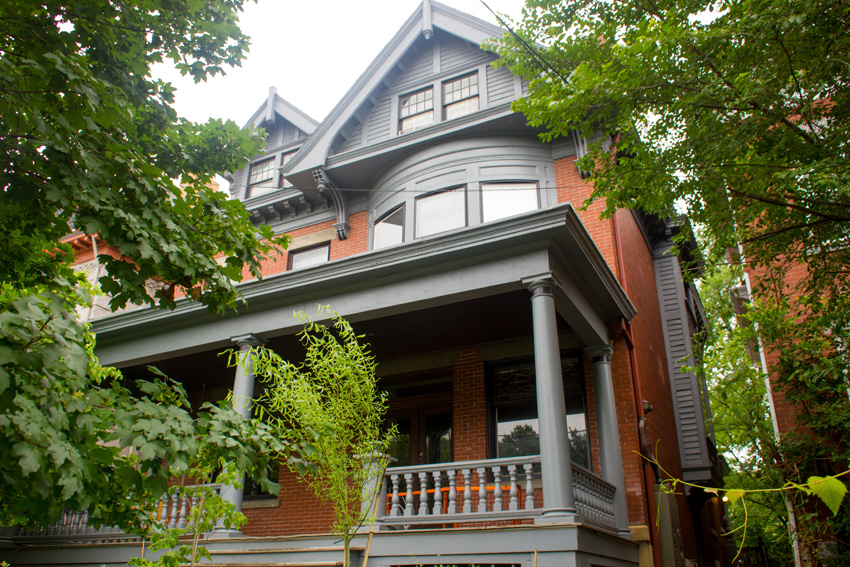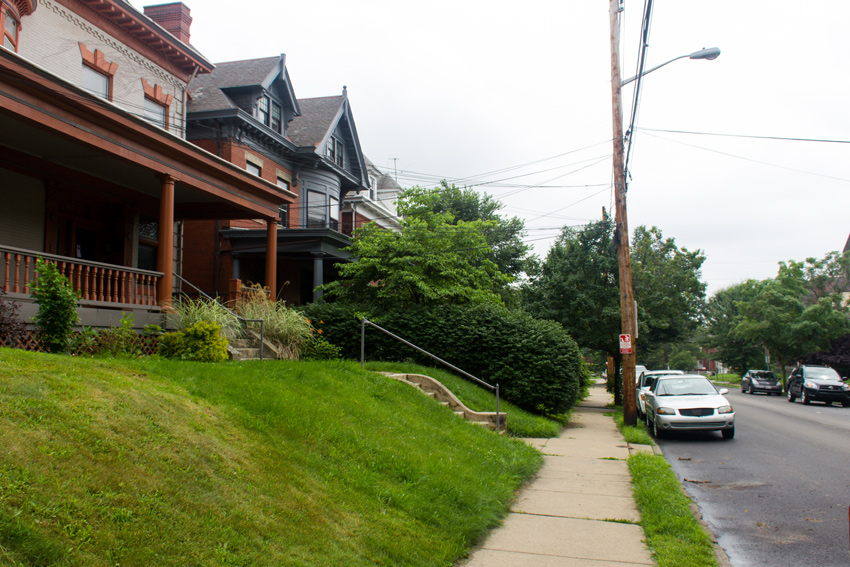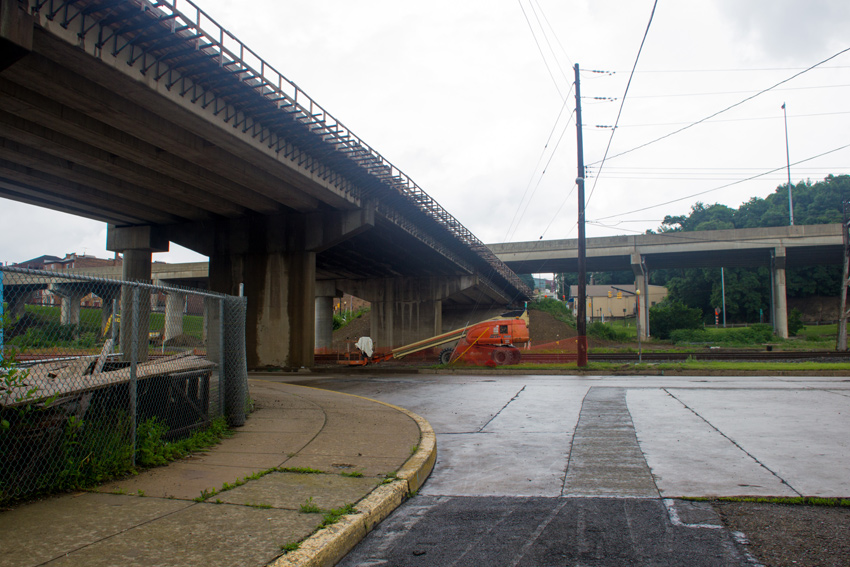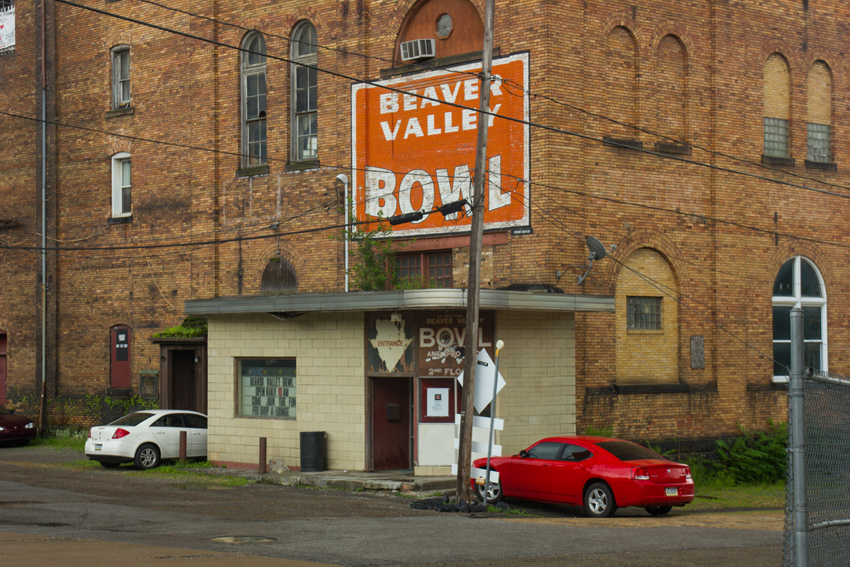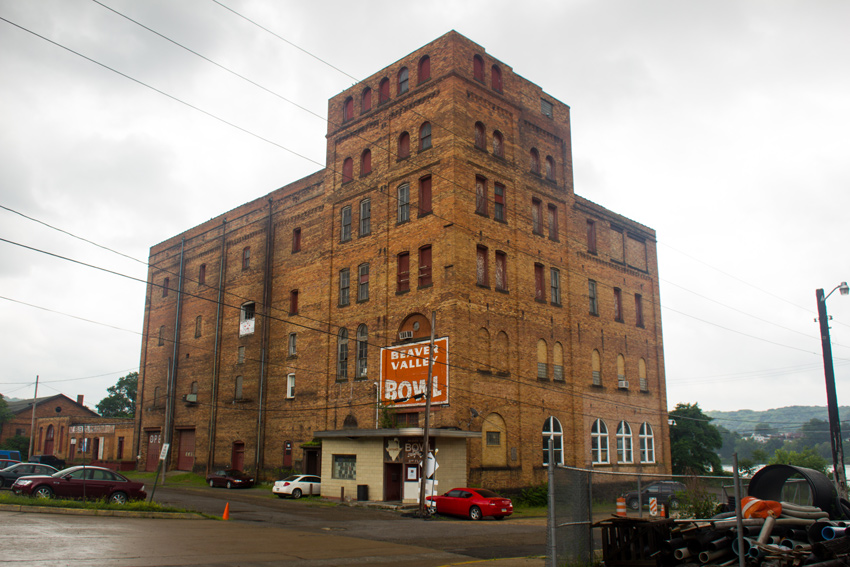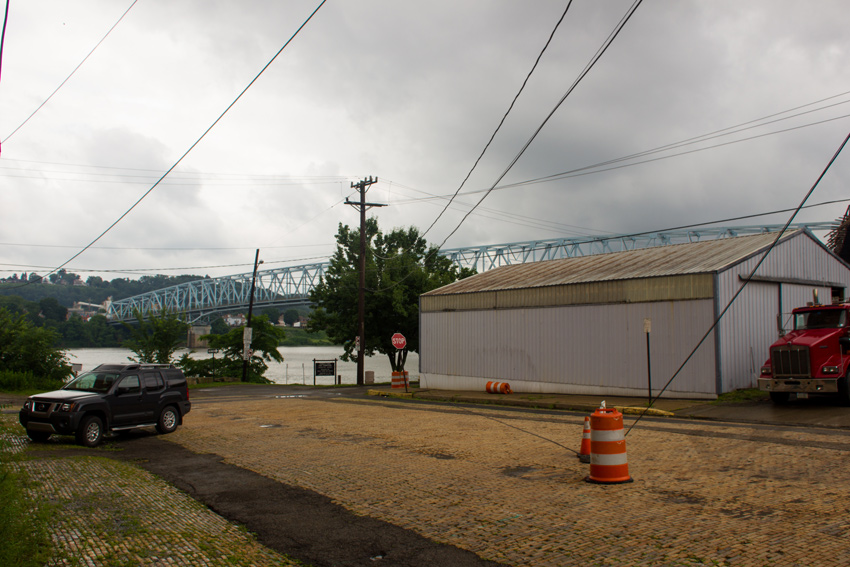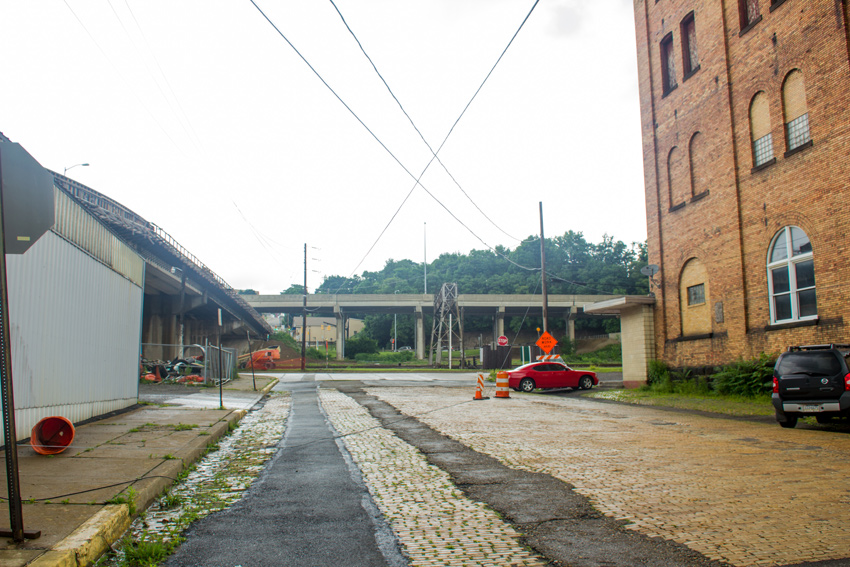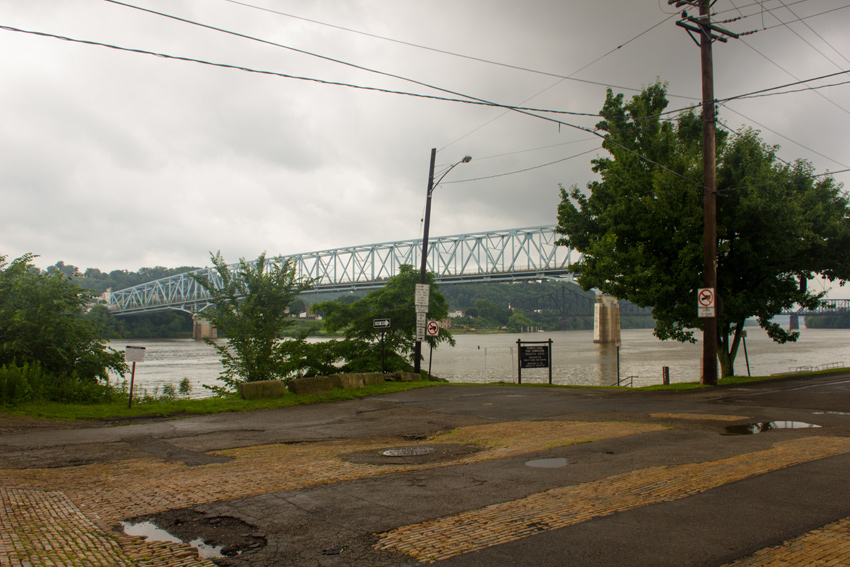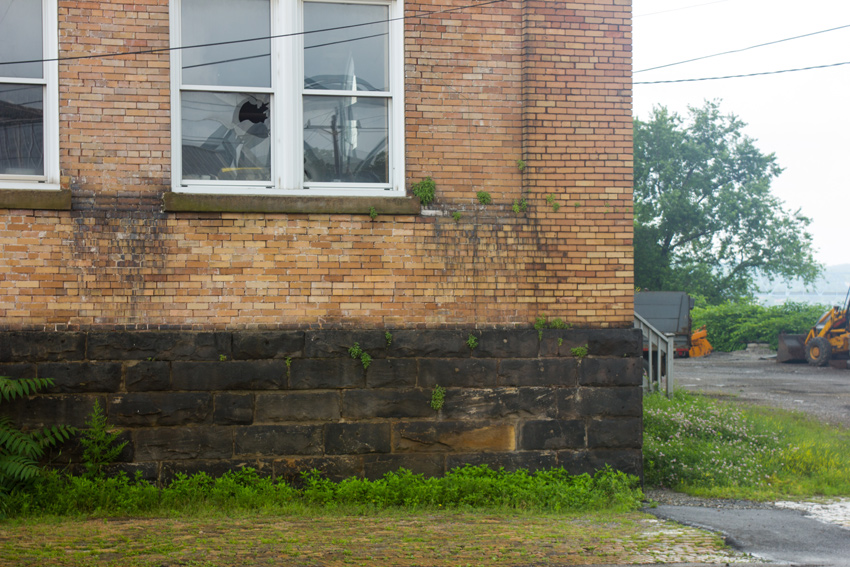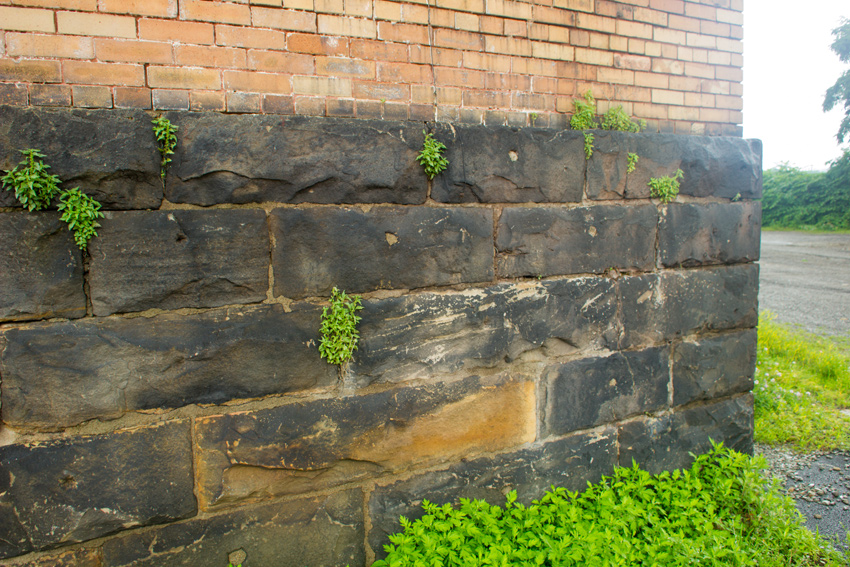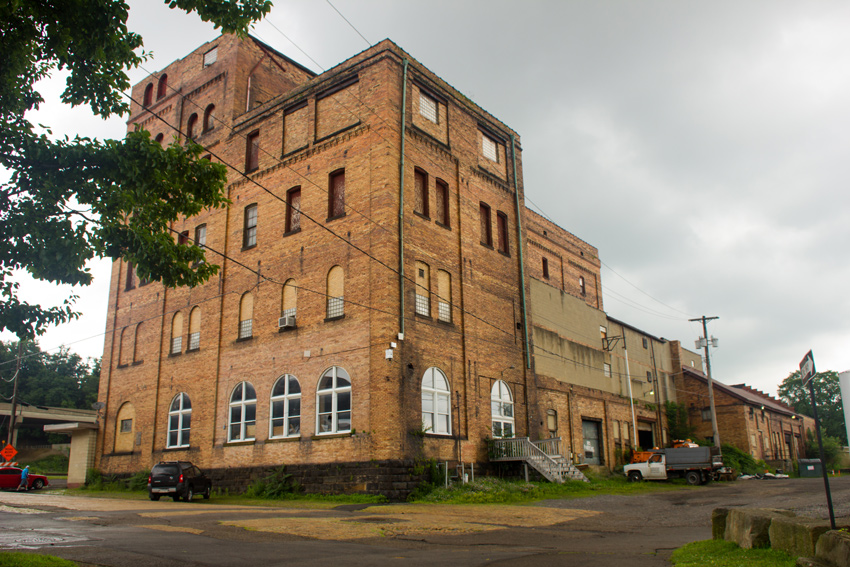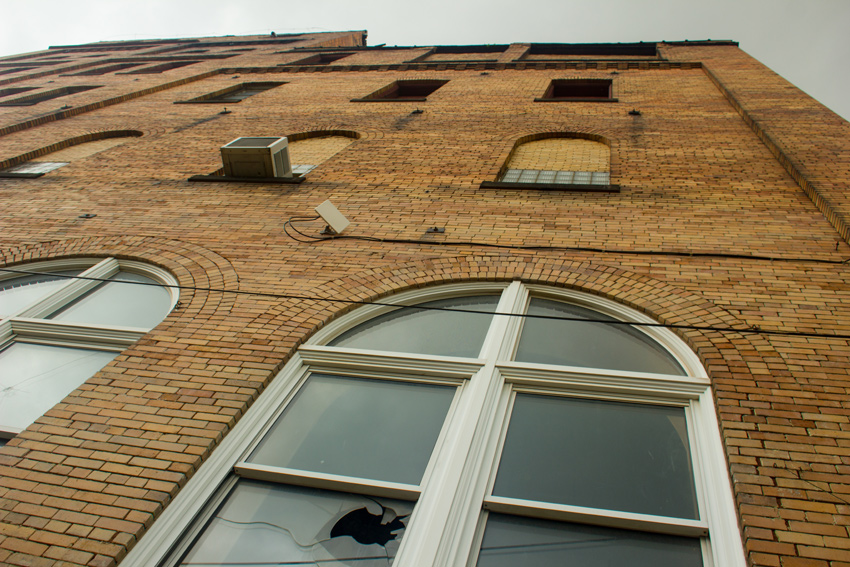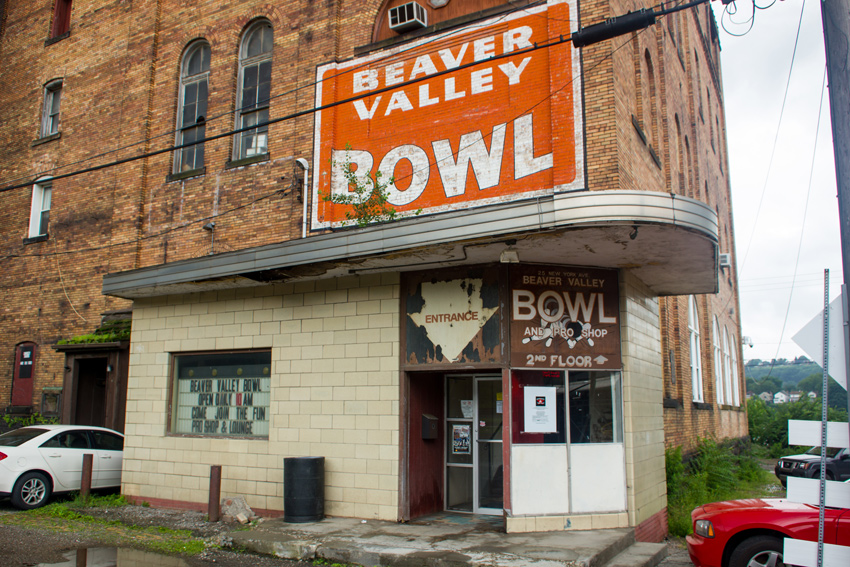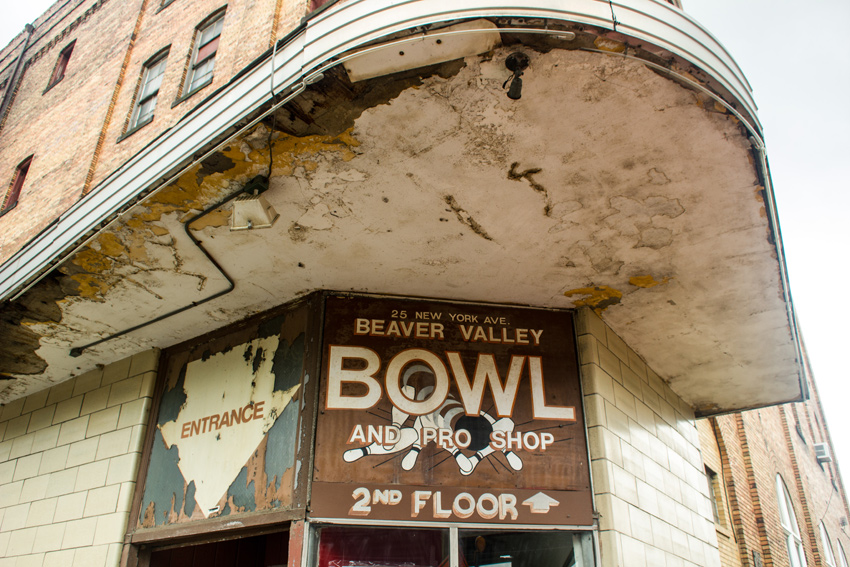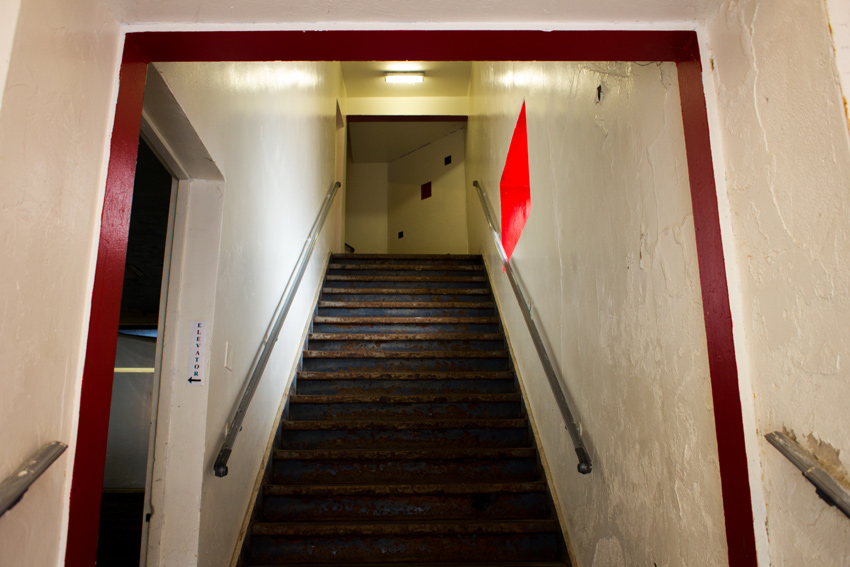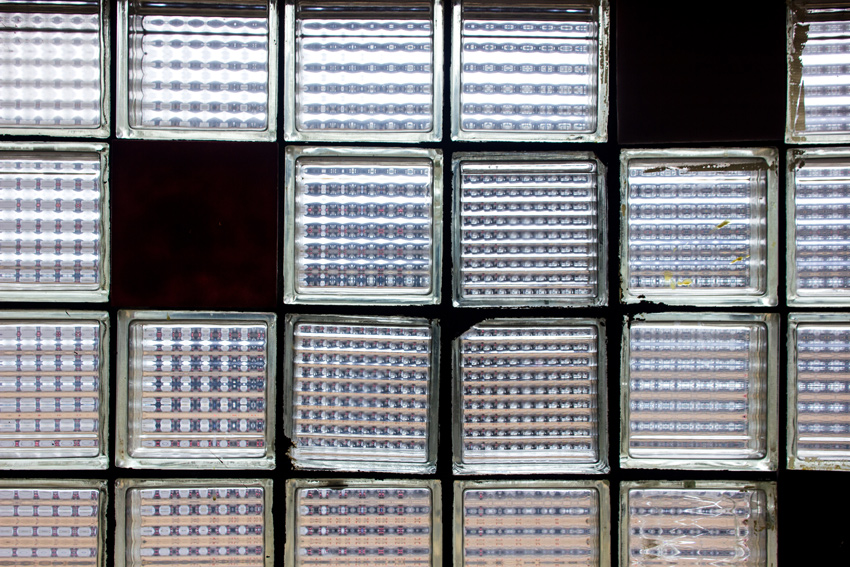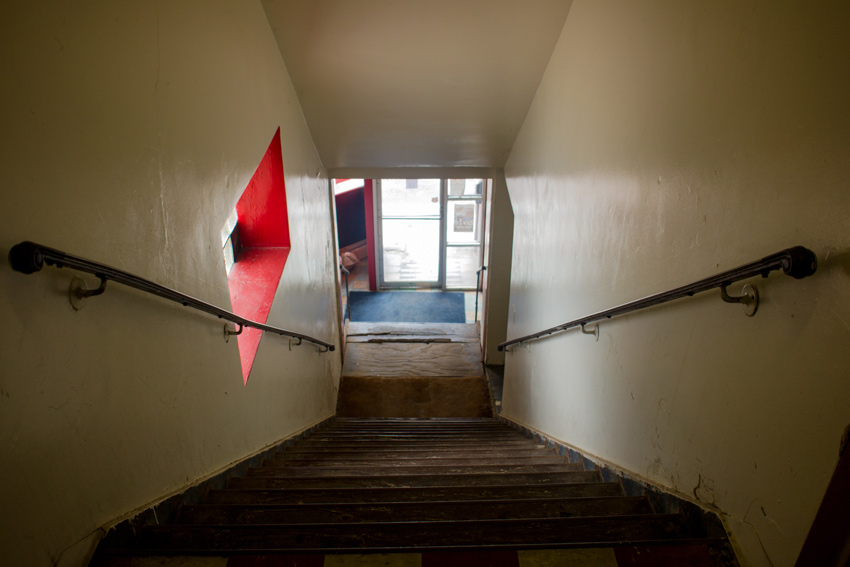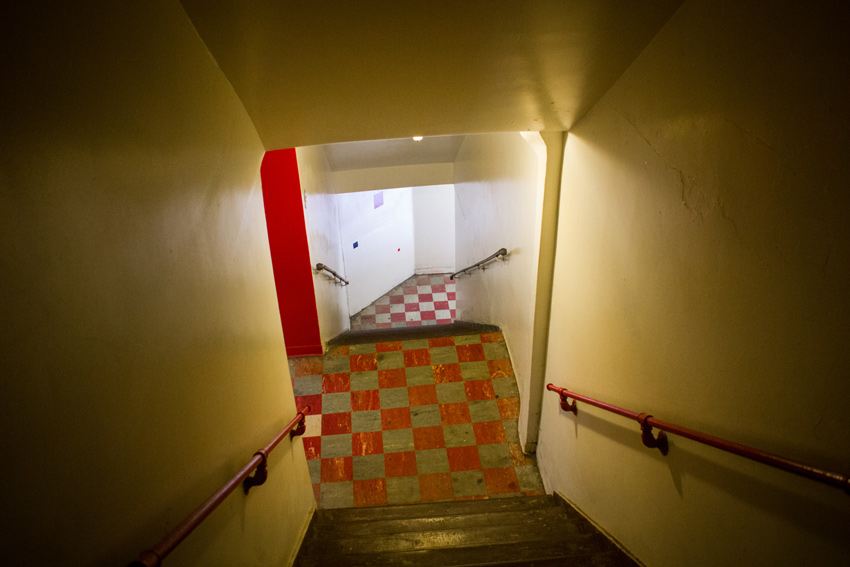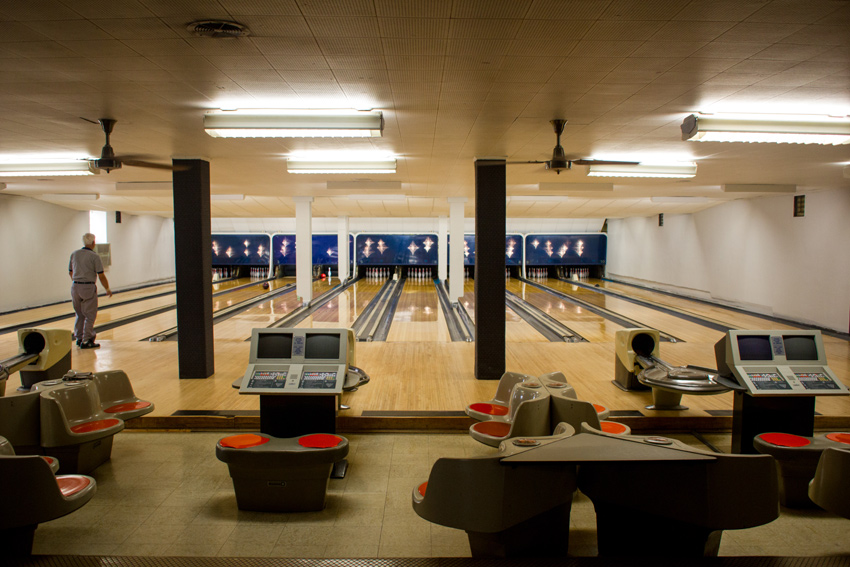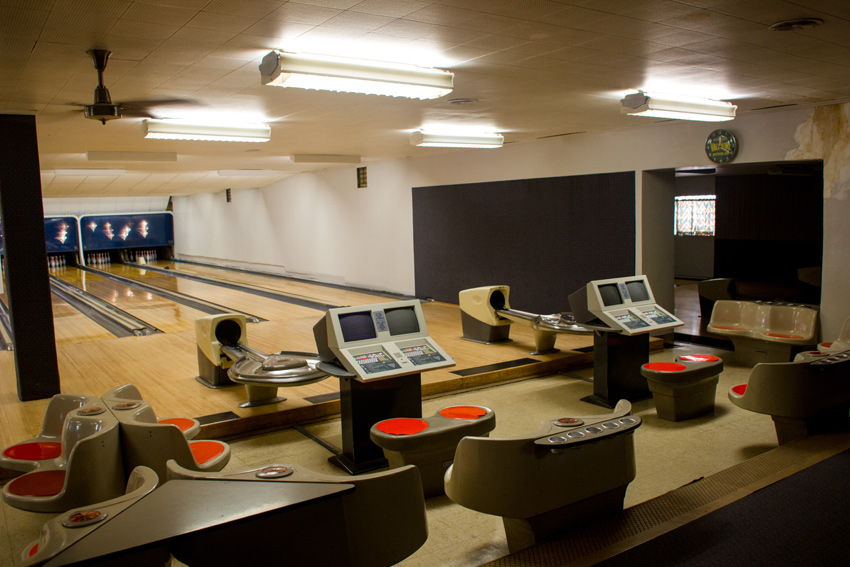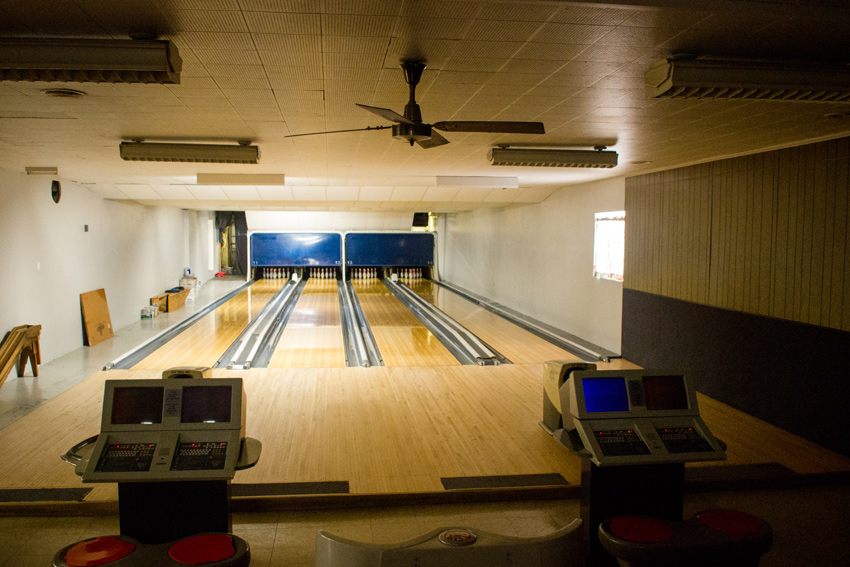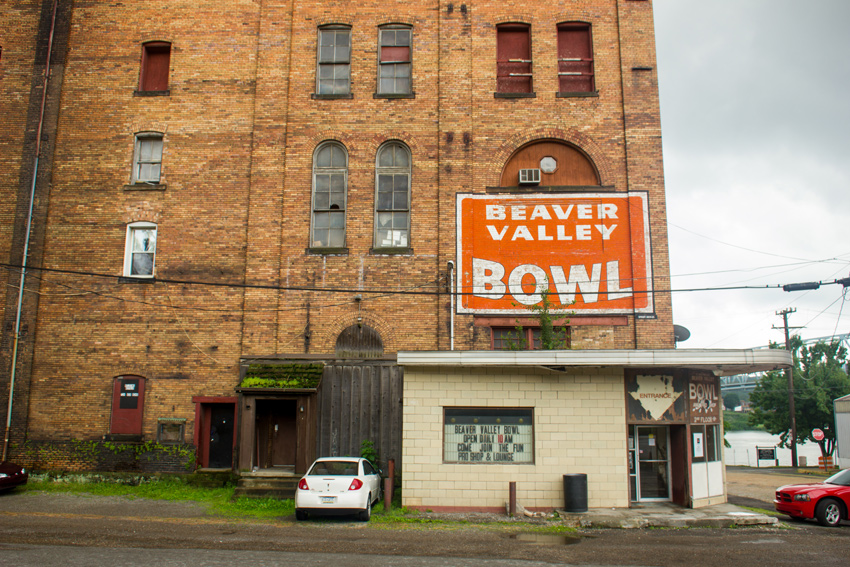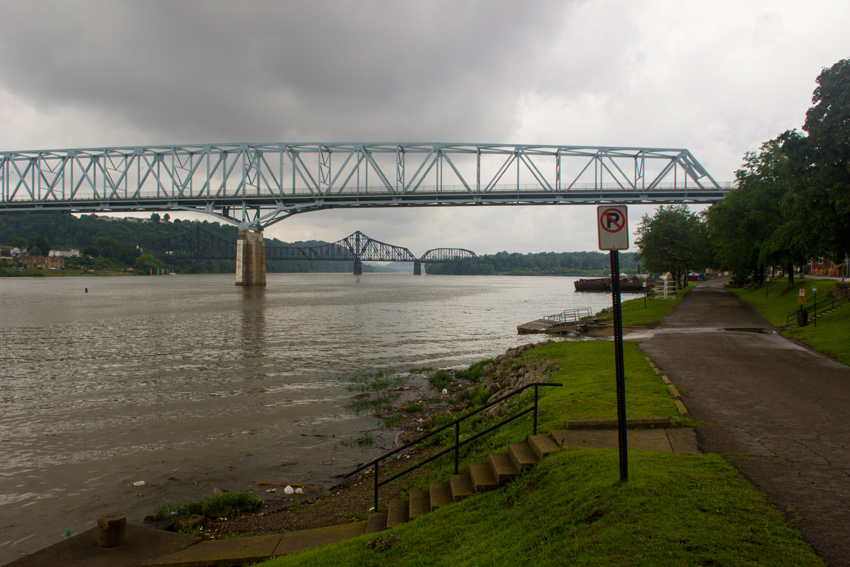Saturday, 27 February 1999Crabtree's Improvised Party
01:11:07Exterior Interior Night Subsequent Appearance VisitedTripp Arrives HomeFriendship Neighborhood
359 South Atlantic Avenue, Pittsburgh, PA 15224
Back in Friendship, Tripp arrives on his block to lots of people and very little available street parking.
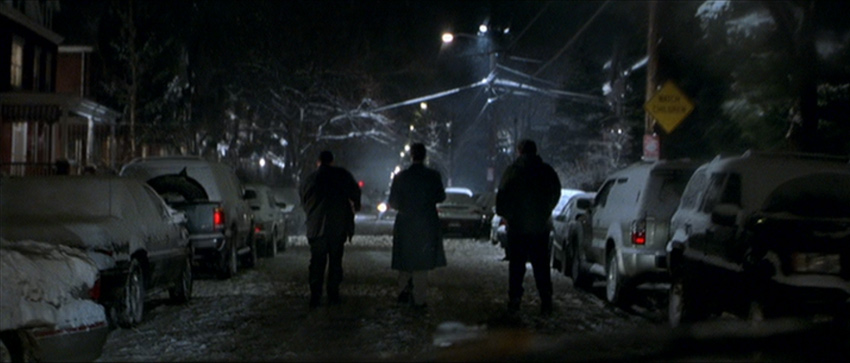
Paramount Pictures
Tripp haphazardly parks in front of a fire hydrant and then notices that the source of the crowd is a party… at his house. Eagle-eyed viewers will note that when Tripp opens his car door and bangs it into the fire hydrant, it moves about an inch. The hydrant was a prop, perhaps insufficiently anchored. Tripp heads inside and talks to Green and Crabtree.
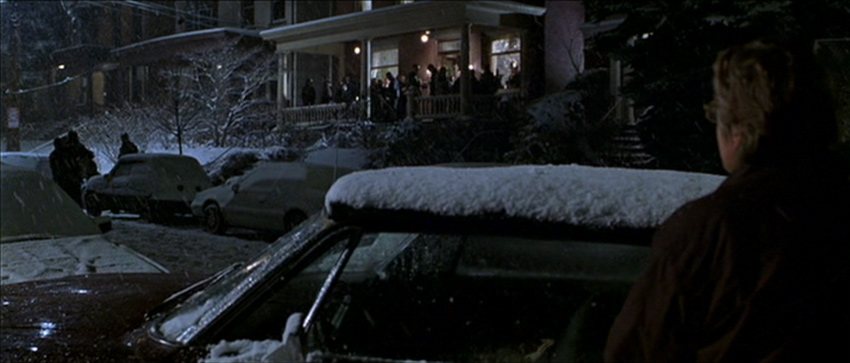
Paramount Pictures
Saturday, 27 February 1999I've Had This Feeling Before
01:14:27Exterior Night Driving First Appearance Unvisited?Driving: Tripp's 1966 Ford Galaxie 500Unknown Location
As Tripp and Crabtree drive to Sewickley Heights to find Leer, the background plates are of unknown locations in the hills of Pittsburgh or vicinity. The terrain suggests travelling parallel to a river, the other side of which has street lights, industrial tanks and hills with antennas on top. The footage may be from Pennsylvania Route 65 North along the Ohio River, part of the actual route to Sewickley Heights.
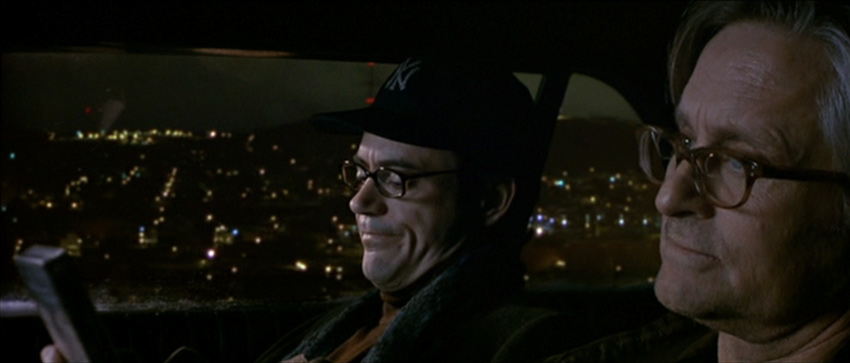
Paramount Pictures
Saturday, 27 February 1999Rescuing James Leer
01:15:09Exterior Interior Night First Appearance UnvisitedTripp and Crabtree at Leer's HouseChatham University
Woodland Road, Pittsburgh, PA 15232
Pinnacle Studios at Trafford Commerce Center
9000 Commerce Circle, Trafford, PA 15085
Tripp and Crabtree arrive at "262 Baxter Drive" in Sewickley Heights and park outside a stone wall. The wall's sections on either side of the driveway are raised, feature address numbering and are topped with lamps. They sneak over to the house on foot and walk up to a basement window from where the sounds of Lee Wiley's "Glad to be Unhappy" (1940) are emanating.
These exteriors were filmed at a Woodland Road house on the private campus of Chatham University in Pittsburgh.
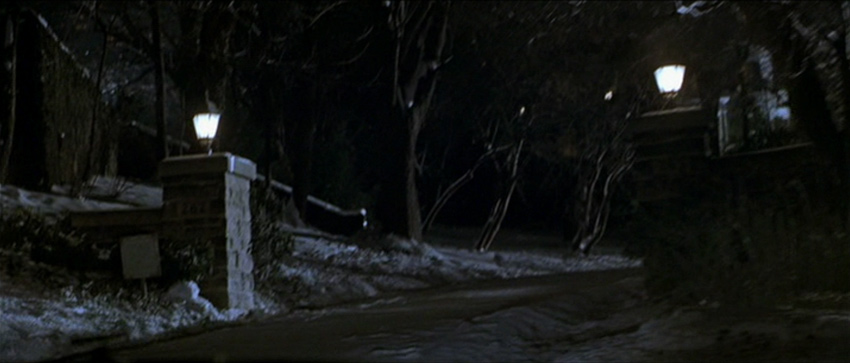
Paramount Pictures
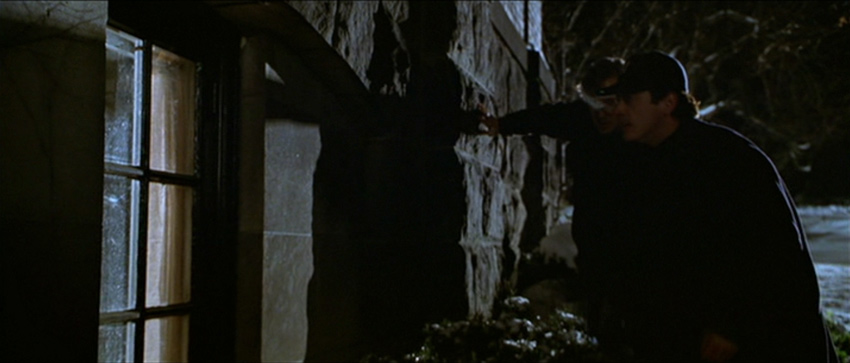
Paramount Pictures
Having gotten Leer's attention at the window, Crabtree and Tripp are invited inside the basement where we are transported to Pinnacle Studios, the same Trafford sound stages where the Gaskell home's upstairs was built and filmed.
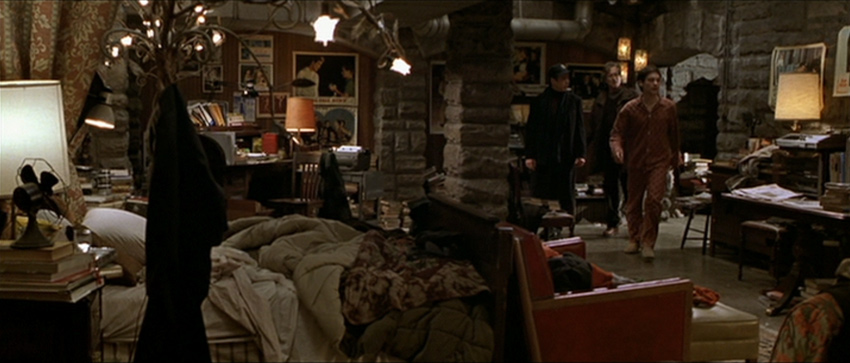
Paramount Pictures
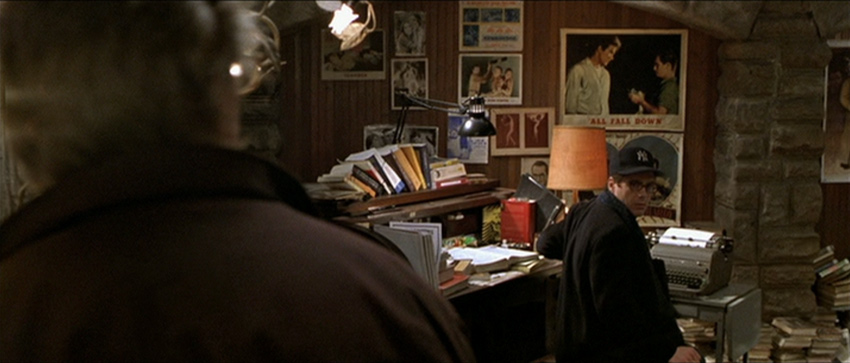
Paramount Pictures
Sunday, 28 February 1999Not Dark Yet
01:19:15Exterior Interior Night Subsequent Appearance VisitedTripp, Crabtree and Leer at Tripp's HouseFriendship Neighborhood
359 South Atlantic Avenue, Pittsburgh, PA 15224
The boys get back to Tripp's house and head inside. Note that Tripp is but the latest to drive south down his street.
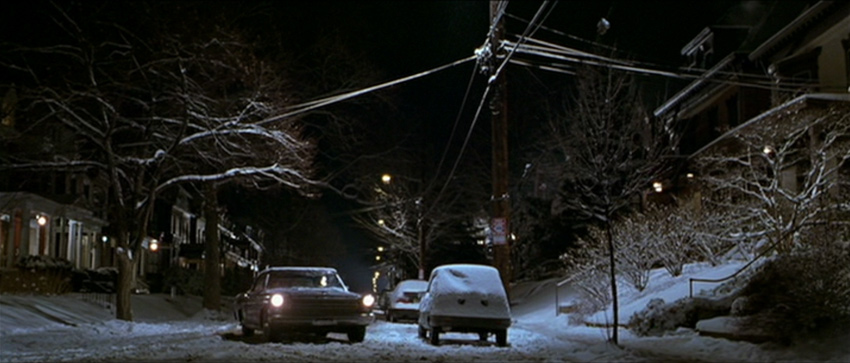
Paramount Pictures
Crabtree and Leer head upstairs straight away, while Tripp notices that a handful of partygoers are still hanging out. Here we get a glimpse of the dining room and kitchen at the front the house.

Paramount Pictures
We follow Tripp as he continues upstairs. Leer and Crabtree are off to better acquaint themselves and Green has already fallen asleep while reading Tripp's unending tome. Off-screen, Tripp apparently sees the remaining party guests out; we next find him alone on the porch sitting at the front door smoking a joint.
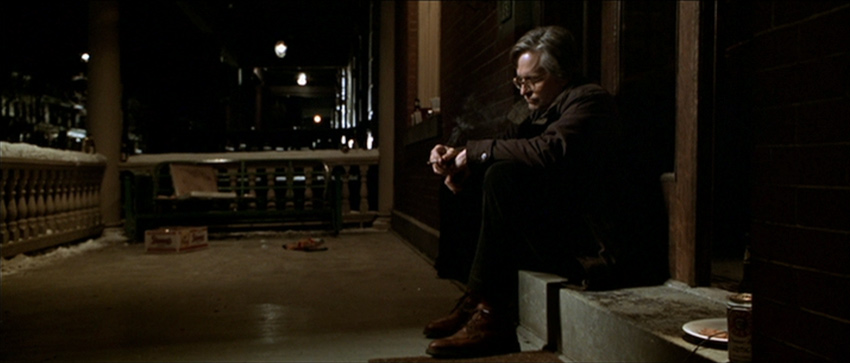
Paramount Pictures
Tripp makes a fateful telephone call and witnesses a red 1974 Ford Econoline van from Kravnik's Discount Sporting Goods slowly drive past the parked Galaxie 500 and then, possibly noticing him sitting there, quickly speed away.
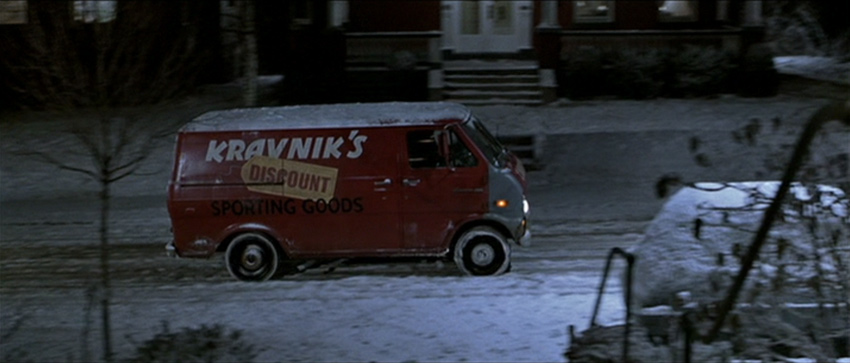
Paramount Pictures
Sunday, 28 February 1999I Said It Didn't Sound Like You
01:22:28Exterior Interior Day Subsequent Appearance VisitedThe Morning After at Tripp's HouseFriendship Neighborhood
359 South Atlantic Avenue, Pittsburgh, PA 15224
It is raining the following morning as Tripp is staring at his IBM Selectric typewriter, an empty piece of paper — page 2612 — loaded and ready. Through his office's bay windows, Tripp sees Gaskell approaching (driving south) in her 1968 Citroën DS 21.
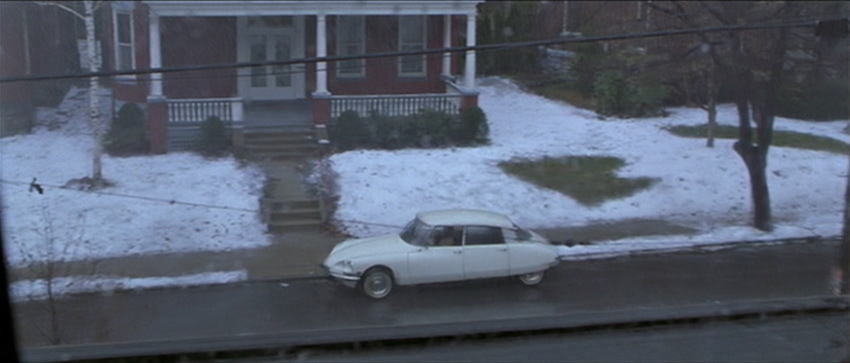
Paramount Pictures
Additional scenes on the front porch, Crabtree's room, the street, Green's room and the front room/main stairs all take place here. The only item of note in this section is the stained glass window in the stairway of Tripp's house. It can be seen in several other shots earlier in the film, but the most complete view of it is available here as Tripp descends with his book.
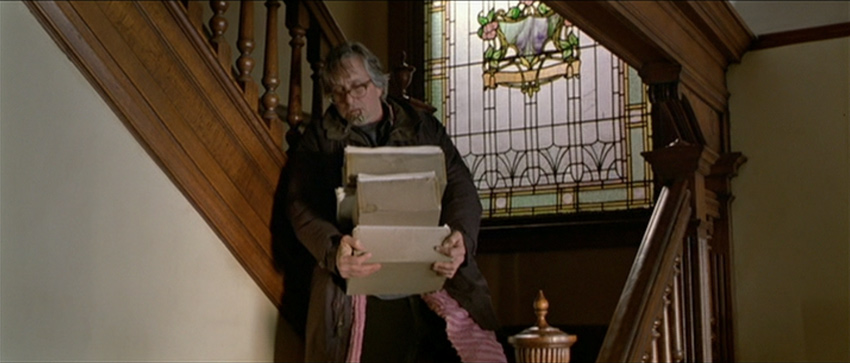
Paramount Pictures
Sunday, 28 February 1999Looking For Hardapple
01:29:28Exterior Day Driving First Appearance Unvisited?Driving: Green's 1979 Renault LeCarUnknown Location
Crabtree and Tripp hit the road in search of Vernon Hardapple and the Galaxie 500. This brief driving scene's background action is of an unknown location, possibly somewhere on Pennsylvania Route 65 along the Ohio River between Pittsburgh and Rochester. I also suspect that it was filmed in a more traditional way with the car being towed by a camera truck.
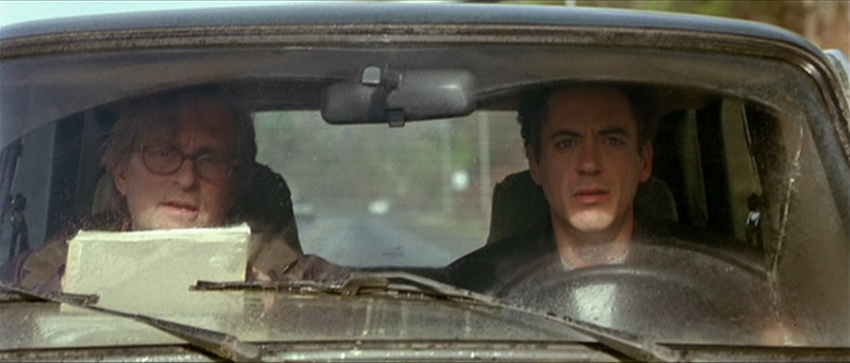
Paramount Pictures
Sunday, 28 February 1999The Book's End
01:29:59Exterior Day First Appearance VisitedTripp and Crabtree at Kravnik'sBeaver Valley Brewery Company Building
25 New York Avenue, Rochester, PA 15074
The first stop of the day on my road trip, we arrive at the old Beaver Valley Brewery Company Building (1903). Generally known as the Beaver Valley Bowl building, this seven-floor brick structure sits on the edge of the Ohio River in Rochester, Pennsylvania.
Just as I did, Crabtree and Tripp arrive by heading east on Harrison Street under the New York Avenue overpass and parallel to a train rolling through. Crabtree pulls over to the yellow-painted curb and parks on the small road also called New York Avenue.
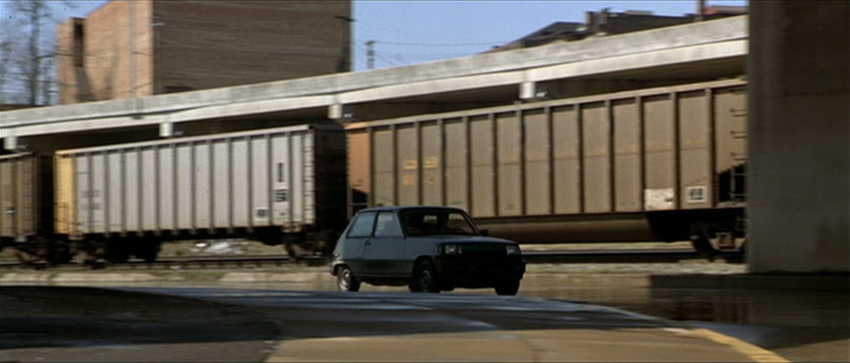
Paramount Pictures
In what a shocked Crabtree calls "genius," Tripp has successfully deduced that the missing Galaxie 500 would be at this location.
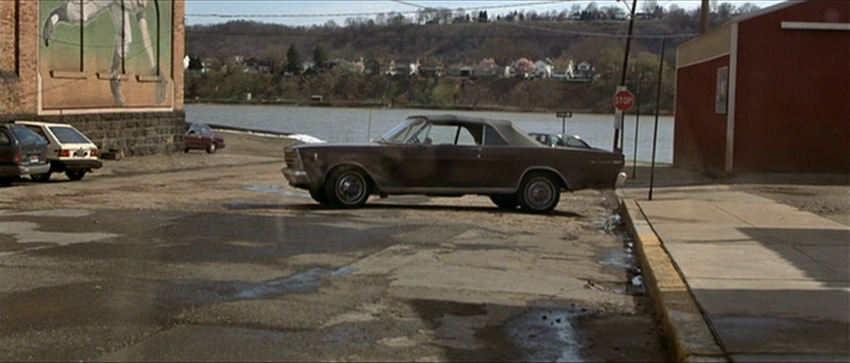
Paramount Pictures
The camera pans left to the Beaver Valley Bowl building where we see the Kravnik's van and related signage added for the film.
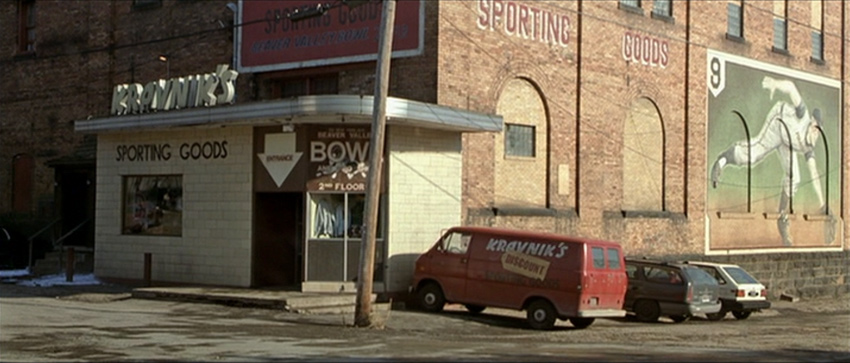
Paramount Pictures
Tripp spills out of Green's 1979 Renault LeCar and limps over to the Galaxie 500 in search of some valuables.
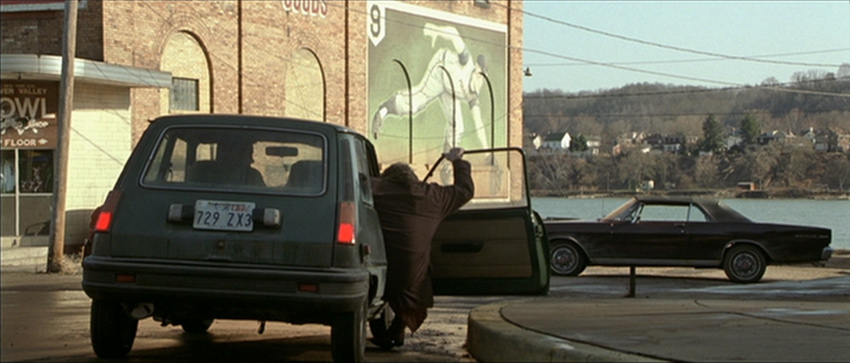
Paramount Pictures
Tripp has a spell/episode holding Leer's gun and awakens to Oola and Vernon Hardapple standing outside the car. Convinced Tripp is there to steal his car and noticing Leer's gun, which goes off accidentally, Hardapple orders Tripp out at gunpoint.

Paramount Pictures
In a valiant if not misguided attempt to rescue Tripp, Crabtree accelerates Green's small car toward the group and opens the passenger door, somehow expecting Tripp to jump inside a moving car.
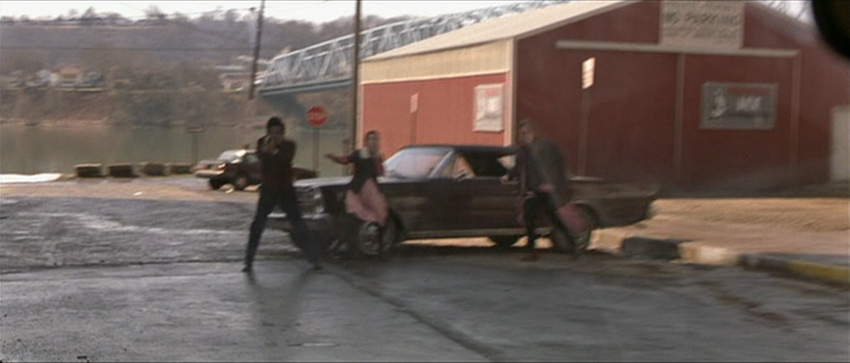
Paramount Pictures
Crabtree speeds past Tripp, Hardapple and Oola heading toward the end of New York Avenue.
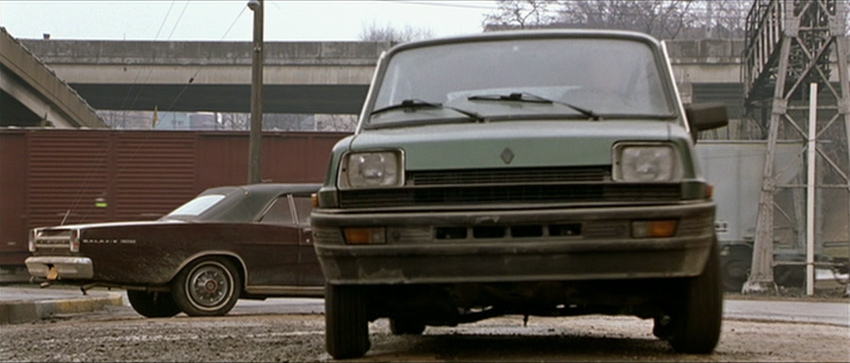
Paramount Pictures
With the road's end nearing and to avoid T-boning a car driving west on Water Street, Crabtree cuts sharply to the left and all 2,611 type-written pages of Tripp's book draft are ejected out the passenger door. We get a nice view of the Rochester-Monaca Bridge (1986) for few frames, but more about it later.
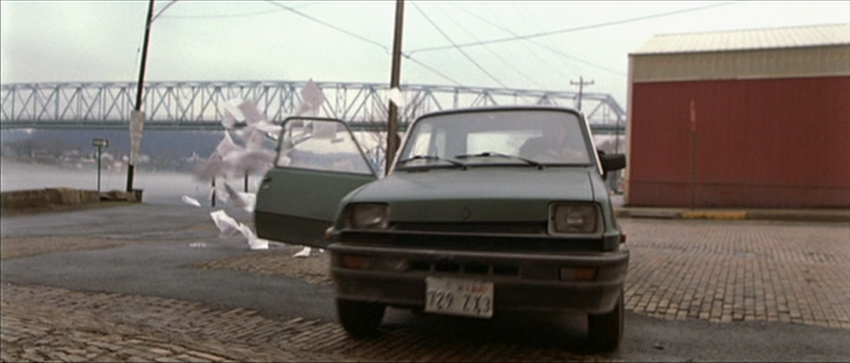
Paramount Pictures
Possibly dazed by a vortex of papers swirling inside the cabin, Crabtree fails to stop the car and instead slams into the southwest corner of the Beaver Valley Bowl building. The building handles the impact well, having been constructed before modern times.
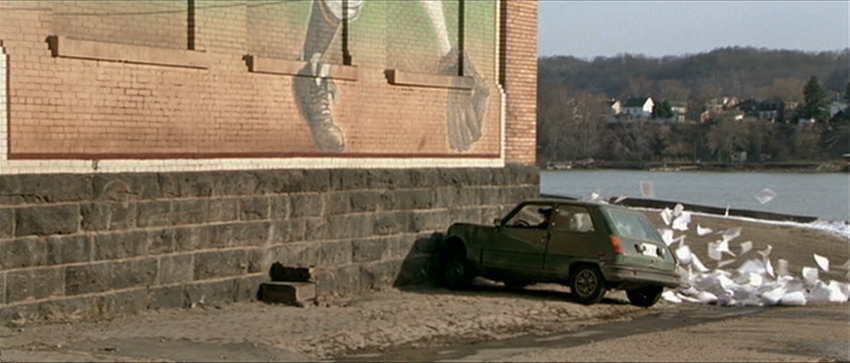
Paramount Pictures
Although my photographs appear to show damage to the large stones in the lower section, location of the car's impact, this is not the case. Whatever caused the visible wear did so prior to the filming of this scene.
Crabtree emerges from the car unscathed and starts running around in a futile attempt to catch the thousands of pages flying all over Water Street and into the river. Following a remark from Tripp to Hardapple about Crabtree, the scene and this location's screen time ends. That I was able to visit this building at all was practically providential, which deserves some context.
Back when this scene was filmed on or about Saturday, 27 March 1999 — after finishing at Emily's parents' house in nearby Beaver — a restoration plan was in the works for the building, eligible for placement on the National Register of Historic Places.
Recalling 1903 when the Beaver Valley Brewery Company built the structure for use as their manufacturing facility, entrepreneur Gene Zuck's renovation plan would bring to the ground floor a new 2,200 barrel-per-year beer brewery, "a full-service riverfront restaurant with seating for 120," a "museum of local brewing history" and other retail possibilities.
$15,000 in grant funding for a feasibility study and $60,000 in local funds were received, this project being "considered a major piece of the borough's riverfront development puzzle." At a projected cost of $2.5 million, Zuck spent $90,000 of his own funds getting started and sought contributions from investors. Zuck acquired a deed for 8.3 percent of the building for $20,000 from owner Brad Davidson, formed One Brewery Place, Inc. and had a preliminary environmental study conducted.
Everything was set to go until it was revealed that land at the adjacent property of Marino Brothers Scrap Yard was contaminated with carcinogens. With this news public "more than $2 million from unsolicited investors" vanished and the entire renovation plan was stopped in its tracks. The future of the building and its "structural steel skeleton, German Romanesque architecture and twenty-foot ceilings" remained uncertain.
The Borough of Rochester's riverfront park development project still moved forward however and a new, less preservationist plan soon emerged. On Saturday, 12 May 2007, the Beaver County Times reported that the building — in their words "a historic Rochester landmark" — was scheduled for demolition. According to Rochester Manager Ed Piroli, "developers advised that the cost to renovate the structure would be exorbitant compared with simply knocking it down and building anew."
The report said that the building would be "razed in 2009 as part of the second phase of the borough's riverfront development project," which called for condominiums, upscale town houses and retail space to be built on and around the site. "In the big picture, would I have liked to see it be able to be revitalized and used? Absolutely," Piroli said, "But our primary goal is to see the area developed and however we get it developed, we're going to develop it."
Pittsburgh developer Pat Nardelli with Castlebrook Development said that "investing millions into renovations wouldn't be a good use of capital." Those investments would be needed in order to run plumbing, heating and air while also dealing with the building's concrete floors measuring eighteen inches thick. "It's not an architecturally pleasing building," Nardelli said.
Fortunately for me, the 2009 plans also fell through and the building was spared the wrecking ball. At least for now; the parcel still exists within the "Rochester Riverfront Business Park" according to Beaver County records. Unable to find more recent news, I do not know where the plans stand or the building's future fate. In the meantime, Beaver Valley Bowl and The Cellar Dwellers comedy theatre are still open for business inside.
Another nearby project done in part because of the foregoing was the structural rehabilitation, bridge deck widening and roadway approach realignment of the New York Avenue (Route 1032) overpass first built in the late 1950s. This $7.6 million PennDOT project started in Winter 2012 and finished in Fall 2014. During my visit, half of the 710-foot long overpass was open to one-way traffic while the other half was under construction.
Beyond the Kravnik's sporting signage added to the building's exterior, film crews also painted a twenty-by-twenty-five-foot mural of noted baseball player Bill Mazeroski of the Pittsburgh Pirates (1956–1972). The bricked-in windows where this mural appears were actually opened up as part of the 1990s restaurant plan, requiring the production to fill them in again. During the filming of the scenes here, "a few hundred spectators watched … gathered on the [New York Avenue] overpass."
Wonder Boys was not the first Hollywood production to visit 25 New York Avenue, however. Beaver Valley Bowl's interior was featured only a few years earlier in Kingpin (1996). That notwithstanding, I knew that after coming all the way here and with the building's future uncertain, I had to go inside and take a peek.
Walking in the front door, a small set of stairs immediately leads to the first level and an elevator lobby.
Ascending the stairs further, a window of glass blocks — this one facing west and visible in the film — is recessed in the wall in the stairway between the first and second floors.
The window of glass blocks is again visible looking back down from the turning point of the stairs.
Continuing up a few more steps and turning right at the red-walled second floor landing, one arrives at Beaver Valley Bowl.
Perfectly retro as befits the building in which it inhabits, Beaver Valley Bowl is the sort of bowling alley that I would prefer given the decor and ambiance of modern facilities. Past a small bowlers retail shop, bar and cashier's counter are the seating areas and lanes. The primary alley has ten lanes spanning the absolute width of the room.
As mentioned above, the Farrelly brothers used this location in Kingpin. Bowling here is Roy Munson (Woody Harrelson).
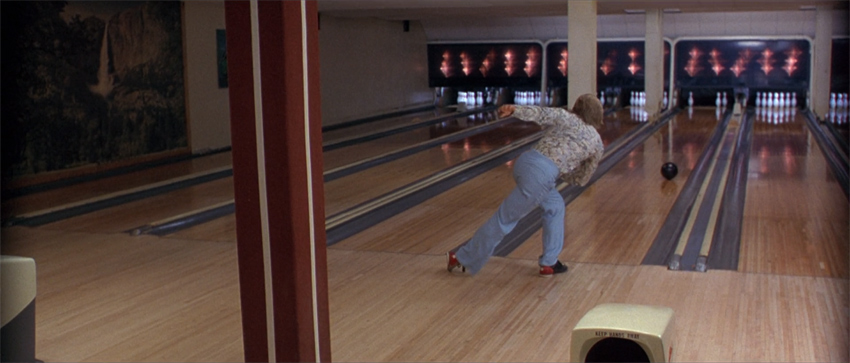
Rysher Entertainment/Metro-Goldwyn-Mayer
On the right side of the primary alley is a small doorway. Above the doorway is a vintage analog clock featuring a green face, white numerals and hands (except for a red second hand) and yellow text advertising Valvoline motor oil.
Through the doorway is a small, four lane secondary bowling alley.
Back in 2007 when the building's destruction was being scheduled for 2009, plans existed to move Beaver Valley Bowl to a new location further west on Water Street. It was to house twenty to twenty-four lanes plus a restaurant and lounge. Perhaps good for business, a new reincarnation would not have much if any of the current location's charm.
The final item of note here is the Rochester-Monaca Bridge (1986) that features in the background of this climactic scene, a witness to the end of Tripp's book-to-be. As I wrote in "The Unexpected Conjunction" on Saturday, 19 August 2006, this bridge has — or rather, had a great local tradition involving its name.
Since 1912, the Monaca Indians and the Rochester Rams have played football leading to the development of a friendly rivalry over time. In 1987 or 1988, Rochester Mayor Gerald LaValle and Monaca Mayor John Antoline decided to "raise the stakes by wagering naming rights for the bridge." Both teams were undefeated (8-0) going into their next game together. With a 31-8 win, Monaca earned the honor of the bridge being called the Monaca-Rochester Bridge until the next year's contest.
The bridge naming fun and indeed the entire Rams/Indians rivalry came to an end on Saturday, 31 October 2009 when the final game was played between the two. The following school year, the Monaca Indians would no longer exist as the Monaca and Center Area School Districts consolidated to form the Central Valley School District. A reportedly emotional game for the teams and fans alike, the winner of this final match-up would get "naming rights through the end of the school year."
The Rams delivered a 28-0 blowout to the Indians so it was the Rochester-Monaca Bridge until summer. It was said that afterward "it will be called the Rochester-Monaca Bridge on the Rochester side and the Monaca-Rochester Bridge on the Monaca side." However, the bridge is officially known as the Rochester-Monaca Bridge in PennDOT records.







